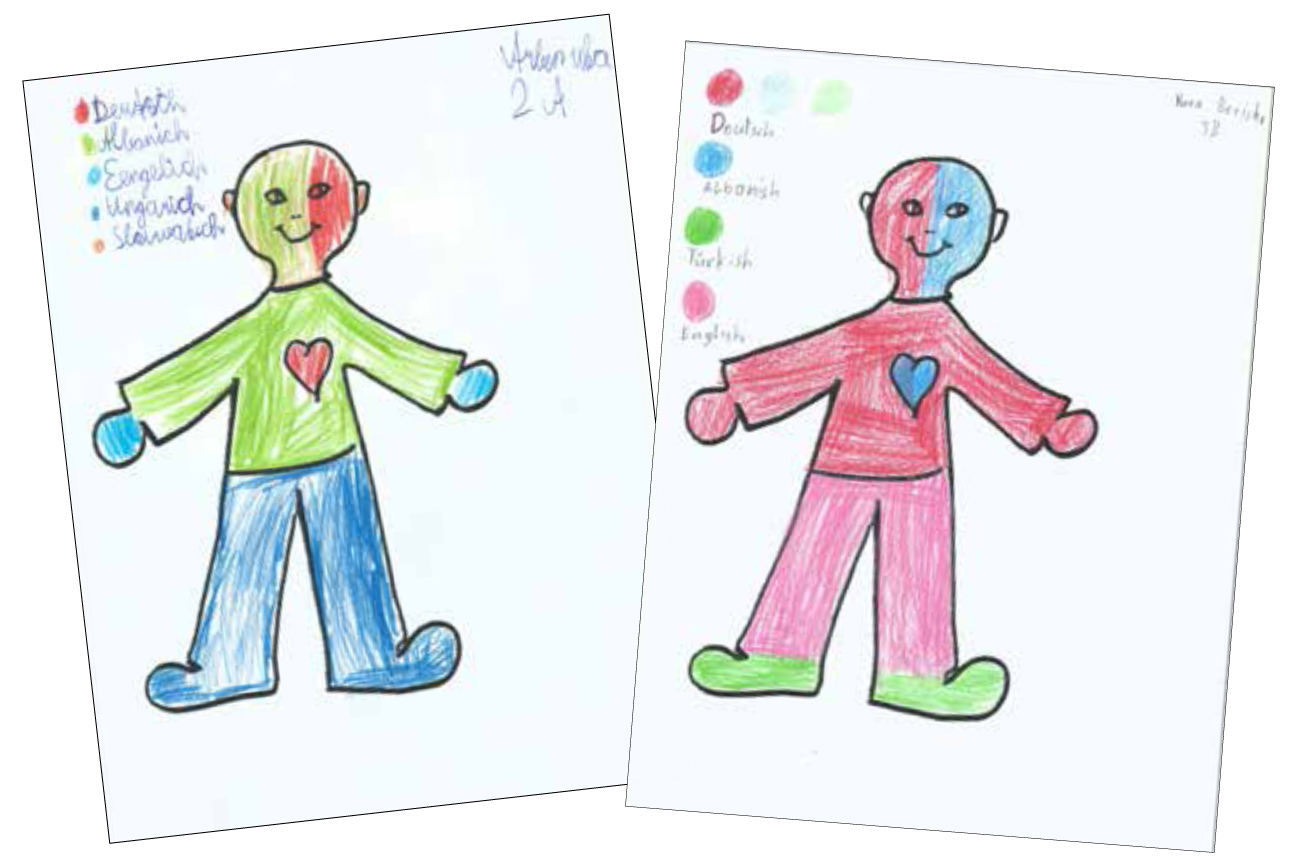Hints:
The project is best suited as an introduction to language biographical topics, as described in 3.5.
Procedure:
- The instructor introduces the topic carefully, but not for very long. We all grow up in and between different languages: our own language, the language spoken in school, the language spoken by the neighbors, and English terms from advertising and music, etc. The dialect(s) and the standard variant of our first language and those of the host country should also count as languages. We may like many of these languages very much, others not so much. These different relationships can be very well demonstrated by matching individual languages with certain parts of the body.
- Every child receives a sheet of paper with the outlines of a boy or a girl. Assignment: with colored pencils create a legend of the colors (e. g. red = mother tongue in dialect; blue = mother tongue in the standard variety, green = language (dialect) of the immigration country, …, purple = Tamil as language of a neighbor family, etc.).

- In the language outline, color the the region that matches a certain language with the corresponding color (e. g. mother tongue/dialect near the heart; the school language French near the hands, as it may help me with work later on, etc.) Many languages from the environment will not be entered within, but around the outlines (e. g. the language of the neighbor family, which I hear a lot, but to which I may not have a special relationship. Important: don’t give the children suggestions or proposals that are too specific! Filling in of the outlines should occur by working individually and with absolute tranquility in the classroom.
- After 10–15 minutes, the students explain their pictures to each other (in the class as a whole or in groups). Which language did I enter at a given place, which language has what kinds of significance for me? Why is that so?
Variants:
Self-portraits or a personal description with the main focus on languages (my first language, other languages I can speak, other languages that are spoken in my environment, etc.).
Bibliographic references
More in-depth information from the “inventor” of the language portraits, Prof. Hans-Jürgen Krumm, Vienna, can be found under http://www.akdaf.ch/html/rundbrief/rbpdfs/61_Mehrsprachigkeit_Sprachenportraits.pdf






